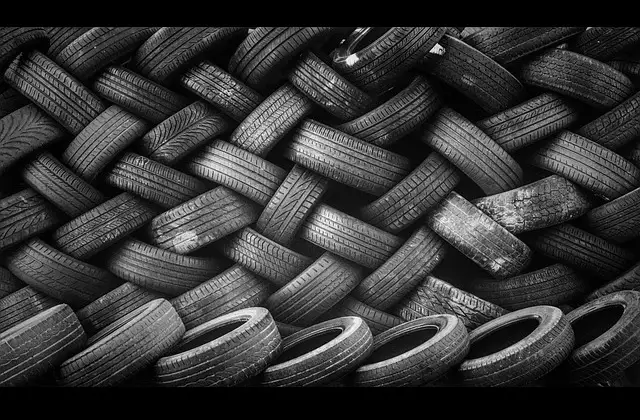Recycling is a key aspect of the sustainable management of waste. In a world where millions of tyres are produced annually, many end up in landfills or are illegally dumped. This seriously threatens the environment, leading to pollution and other hazards. Tyre recycling is one solution to this problem, but it’s not just about reducing waste. It’s also about creating something useful out of discarded materials, promoting a cycle of sustainability. It’s a process that involves several sustainable practices that we’ll delve into in this article.

Among the many processes involved in tyre recycling, one tool stands out for its efficacy and efficiency – the tyre baler. This machine is designed to compress tyres into easy-to-handle bales that can be efficiently transported or stored for future use. For more information regarding this, check out this YouTube page: https://www.youtube.com/@gradeallinternationalltd1012/videos.
With the tyre baler’s role briefly outlined, let’s explore some sustainable practices in tyre recycling.
1. Using Eco-Friendly Technologies
Using eco-friendly technologies in tyre recycling plays a crucial role in curbing environmental degradation. It entails utilizing machinery specifically designed to minimize energy consumption and reduce greenhouse gas emissions. For example, tyre balers are often equipped to operate on low power, making them an energy-efficient option. The tyre recycling industry can significantly reduce its carbon footprint and contribute to a more sustainable future by employing such eco-friendly technologies.
2. Recycling Tyres Into Rubber Mulch
Recycling tyres into rubber mulch is a common and sustainable practice in the tyre recycling industry. Rubber mulch is an excellent substitute for wood chips or bark in landscaping and playgrounds. It offers durability, shock absorption, and unlike organic mulch, it does not decompose over time.
3. Creating Rubberized Asphalt
Recycling tyres into rubber mulch is a common and sustainable practice in the tyre recycling industry. Rubber mulch is an excellent substitute for wood chips or bark in landscaping and playgrounds. It offers durability, shock absorption, and unlike organic mulch, it does not decompose over time. By repurposing tyres into rubber mulch, we can reduce waste, conserve natural resources, and provide a long-lasting and eco-friendly solution for various applications.
4. Developing Tyre-Derived Fuel
Developing tyre-derived fuel (TDF) is a sustainable practice that involves converting old tyres into a valuable energy source. TDF can be used in industrial facilities like cement kilns and paper mills as a more efficient fuel. By utilizing TDF, we can reduce the demand for non-renewable resources like coal and oil. This practice addresses waste management issues and contributes to the transition towards a more sustainable and environmentally-friendly energy sector.
5. Producing Tyre-Derived Aggregate
The production of tyre-derived aggregate (TDA) involves shredding discarded tyres to create a versatile material for various civil engineering applications. TDA finds application in landfill construction and road building, among others. By utilizing TDA, we contribute to sustainability by giving a second life to discarded tyres, reducing landfill waste, and preserving natural resources. This practice promotes a more circular economy and helps conserve our environment.
6. Conversion Into Building Materials
Through transformation, old tyres can be converted into building materials. The recycled tyre rubber can be used to produce various construction materials, such as roofing shingles, floor tiles, and bricks. This practice not only recycles waste tyres but also reduces the demand for new raw materials in the construction industry. Using recycled tyre rubber can contribute to waste reduction, environmental conservation, and promoting sustainable construction practices.
7. Making Sports Surfaces
Recycled rubber from tyres can be used on sports surfaces. This includes running tracks, artificial turf, and even playground surfaces. These surfaces are long-lasting and provide excellent shock absorption.
8. Crafting Eco-Friendly Furniture
Creating furniture from recycled tyres is an innovative approach to the pursuit of sustainability. From ottomans to outdoor seating, tyre furniture is durable, unique, and environmentally friendly.
9. Reuse In Green Infrastructure
Green infrastructure like rain gardens and stormwater planters can benefit from recycled tyres. They can be used to create porous surfaces and structures that help manage stormwater runoff and contribute to overall sustainability.
10. Retreading Of Tyres
Lastly, retreading is an important practice in tyre recycling. This involves removing the worn-out tread from a tyre and replacing it with a new one. It’s a cost-effective and resource-efficient way to give tyres a new lease on life.
Now that we’ve delved into these sustainable practices in tyre recycling, it’s clear that there’s much to gain from this process. Not only does it mitigate the environmental issues associated with tyre waste, but it also paves the way for resource conservation and producing valuable materials. We are one step closer to a sustainable future by employing these practices.
Conclusion
Tyre recycling offers a plethora of opportunities to promote sustainability. From using eco-friendly technologies and tyre balers to transforming waste into valuable products, these practices can change the narrative around waste management. It’s a call to action for all of us to consider how we can contribute to this sustainable initiative.
Author’s Bio:
Emily Roberts is an environmental advocate with a focus on sustainable tyre recycling practices. With a background in waste management and green initiatives, Emily shares ten effective strategies to promote eco-friendly tyre recycling. Her insights cover innovative recycling methods, upcycling initiatives, and creating awareness about responsible tyre disposal. Outside of her environmental pursuits, Emily enjoys hiking in nature, practicing zero-waste living, and participating in community clean-up events.
Also Read: